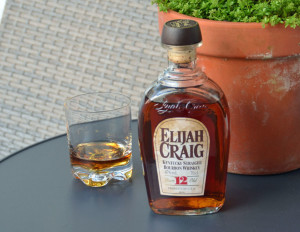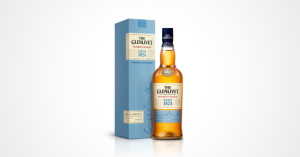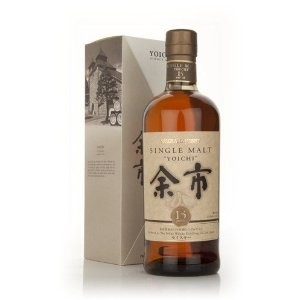Whiskey Shortage Report 2015
Putting Last Year’s Shortage Scare Stories Under The Microscope
By Richard Thomas
The previous year’s most consistent whiskey storyline was the “whiskey shortage,” spawning a plethora of articles in the whiskey press and the larger mainstream media, running right up to the last days of 2015. Tales of rapidly evaporating stocks of Scotch and bourbon have been a staple of “clickbait” sensationalism for some years now, but this past year produced a particularly strong and steady stream of yellow ink.
With few exceptions, these articles followed an identical format: a scary, attention getting headline followed by text that largely failed to back that headline up. As Public Enemy told us back in the day, “don’t believe the hype,” and the best way to illustrate why is to closely examine the substance of these shortage tales.
The Great Bourbon Shortage Hoax
Every year, Buffalo Trace puts out a press release warning its consumers that demand for its most hotly sought after whiskeys—Pappy Van Winkle, the Buffalo Trace Antique Collection, W.L. Weller 12—greatly exceeds supply and allocation will continue. This announcement was followed by a now-routine, just-as-annual torrent of articles that take the genuine shortages of a handful of brands from just one distillery and use them to spin frightful tales of all bourbon everywhere running out.

(Credit: Richard Thomas)
To that predicable occurrence was added the new labeling of Elijah Craig 12 Year Old. Heaven Hill moved the age statement for this much-favored classic from the front to the back label, sparking many bloggers and some journalists to speculate that this was the first step in dropping the age statement altogether and turning Elijah Craig into a no age statement (NAS) whiskey.
Heaven Hill has repeatedly denied any intention to make Elijah Craig 12 Year Old into an NAS product, but they would say as much whether they planned to or not, so what is truly taking place there is anyone’s guess. Perhaps the company intends to replace the 12 Year Old as some fear, introduce an NAS Elijah Craig alongside the 12 Year Old, or are merely responding to what some marketing study told them about their labeling. Any of these possibilities are as likely as the others.
Yet looking at what Heaven Hill did as a whole last year, I find it rather short-sighted, if not a knee-jerk reflex, to resort to shortage conspiracy theorizing about that label switch. After all, this was the same year that Heaven Hill released Elijah Craig Barrel Proof, 18 Year Old and 23 Year Old in tandem for the first time in recent memory, coupled to a John E. Fitzgerald, Stitzel-Weller 20 Year Old release for good measure. Taken as a whole, the picture is hardly one of a severe lack of aged stock.
Scotch Sidles To NAS
Much attention has been case on the shift made by some single malt Scotch brands, such as The Macallan, to NAS. The most recent example was The Glenlivet replacing its 12 Year Old with an NAS, Founder’s Reserve, in European markets. This was met with much groaning and gnashing of teeth among European Scotch bloggers, who predictably ruminated about how their beloved malt whisky stocks were drying up.

(Credit: The Glenlivet)
In some instances, shifts to NAS whiskies in the Scotch sector are about real stock shortages, but that probably isn’t the case for The Glenlivet, any more than it was for The Macallan before it. Both brands continued the age statement whiskies in question for the American market, where they were hard at work expanding sales and market share, and limited the NAS product swap to their established customers in Europe. This is a strategy I call “robbing Peter in hopes that Paul will pay you more later,” and is less of a matter of a straight stock shortage than shifting a finite amount of stock to where it will drive the most growth.
Sayonara To Old Nikka
The only whiskey shortage story of 2015 that got it right was that of Japan’s Nikka and Suntory, and The Whiskey Reviewer was among the earliest to connect the dots and sound the alarm. Following two years that saw skyrocketing demand, Nikka announced they were eliminating all their age statement whiskies in favor of new NAS brands, while Suntory enacted a 20 to 25% price hike for most of their brands.
At the time, I observed that what made these sudden and shocking measures by the Big Two of Japanese whisky so interesting was how they compared to their American and Scottish counterparts, both allegedly facing severe shortages, are doing. Imagine if the Heaven Hill announced they were phasing out all age statement expressions or Chivas Brothers announced a hefty, across the board price increase. The contrast aptly highlights just what is and is not a shortage.

(Credit: Anchor Distilling)
To that I must add a more recent observation that in my liquor store checks, encompassing four European countries and half a dozen U.S. States, I have found Japanese whisky is very much on the shelf. Indeed, I often find that in stores where it once occupied a shelf or two it now holds an entire section. That includes many of the Nikka age statement whiskies that are now discontinued, and therefore should have disappeared in a frenzy of speculation and hoarding. So, while Japanese whisky is certainly dearer than it was five years ago, it hasn’t been swept away.
Don’t Believe The Hype
When I think “shortage,” I think of the 1970s oil embargo and painfully long gas lines, with a fill-up sometimes unavailable at any price. Some whiskeys out there meet that standard and are genuinely in shortage, but if Pappy Van Winkle can only be had at four-digit prices these days, several rare Scotch single malts cost as much as a luxury car!
Whiskey fans would do well to remember the cautionary tale of W.L. Weller 12 whenever they see a terrifying shortage headline. This bourbon was in plentiful supply before Josh Ozersky named it as a substitute for Pappy Van Winkle in Esquire magazine a couple of years ago. That idea was picked up and repeated by a host of unimaginative writers, provoking a run on the brand that is still having a ripple effect to this very day. It wasn’t grass roots demand that put Weller 12 into short supply, but a yellow journalism-inspired feeding frenzy. Think on that whenever someone writes that you should kiss your favorite tipple goodbye.





in regards to the weller, Elijah Criag 18( which was anundervalued bottle but not $190) and Black Maple Hill both suffered the same fate. BMH in my opinion being the larger loss since it is my favorite American whiskey which I can no longer afford, at $50/bottle it was great but there is no clearcut substitute for less than $125, for high rye bourbon’s I’ve been relegated to Basil Hayden(mediocre at best), redemption(for the price it’s fine for a cocktail) and the highwest(over priced though drinkable). I’d love black maple hill to come back down to reality and I’d happily lay down $75/bottle for it however not $200+ it’s just not that good.
Our Deputy Editor brought back a large haul from New Orleans as his “Xmas gift to himself.” I don’t know exactly what he spent on the Black Maple Hill he got as a part of that, but it was far, far less than $200. I can say that because I know what he paid for the whole thing. It may cost that much where you are, but certainly not everywhere, so it’s not quite like Weller 12. That was swept away in a spate of madness back in ’13.
I have never had BMH but if you are looking for a high rye content bourbon may I suggest Old Grand-Dad 100 proof Bottle-in-Bond. It is 27.00 a bottle in Maryland and I find it better than Basil Hayden. I would guess the rye content to be around 30%.
Now whenever I see one of these “whiskey is running out” stories, I think “what lowdown dirty whore wrote this?”
I bought two bottles of Weller 12 for $35 a bottle last year about June. Bought two bottles of Antique at the same time. It’s hard to find but retailers around here aren’t gouging. Black Maple Hill is very abundant under $100 around Atlanta.
Lucky fellow. Last time I did a Stateside, in-the-flesh price check, my average for Weller 12 came away at $70. Black Maple was priced below $100, but I didn’t find it that often. So, enjoy that such things are coming through your supply chain like that!